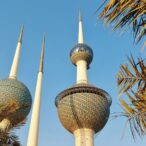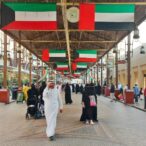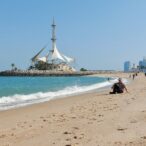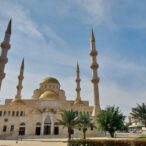Kuwait
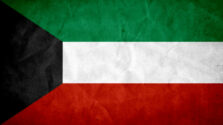
Official name: State of Kuwait
Population: 4 444 000
Total area: 17 820 km²
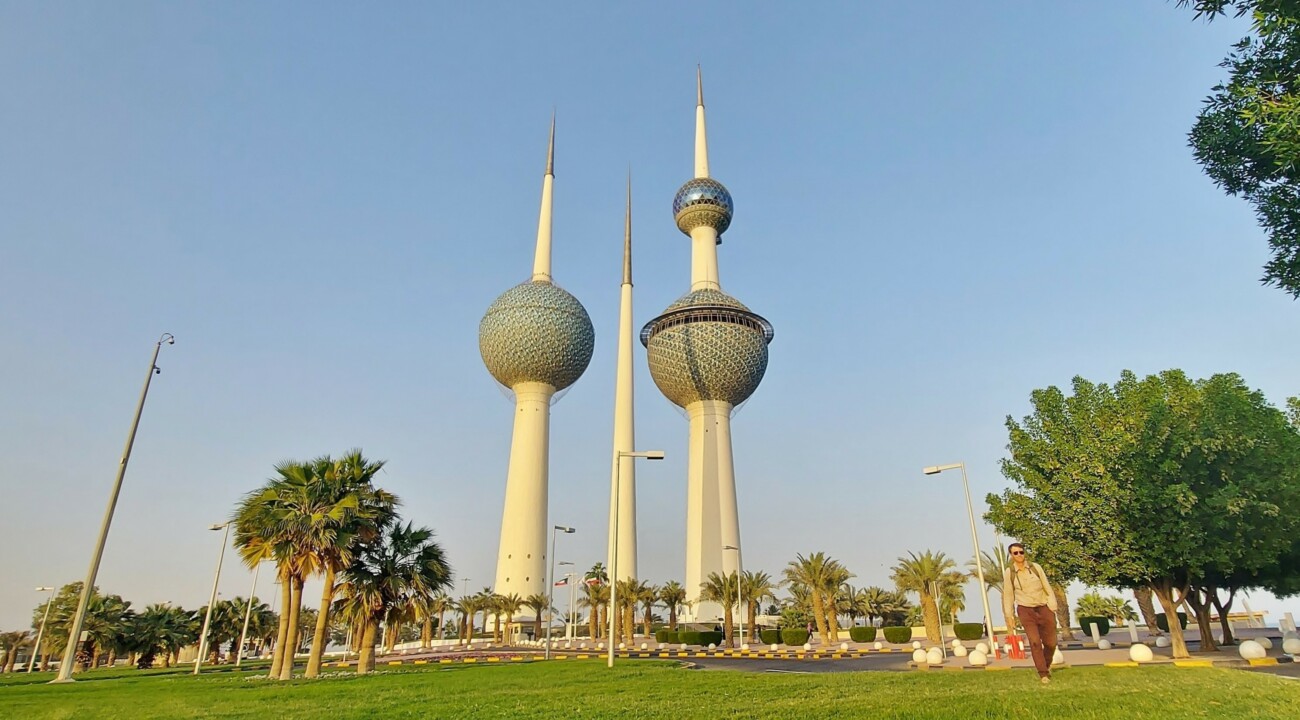
Gallery
Kuwait – tourist attractions
Kuwait is a small desert country which has several places worth seeing. In my case, when I went to Kuwait I didn’t expect anything new but I was still happy that I had a chance to see another Arab country. I also think that for someone who is just getting to know the Arab world, Kuwait is a very good introduction. Kuwait has interesting cities, traditional Arabian bazaars and some nice beaches. In Kuwait I ate good meals, drank traditional Arabic coffee on the beaches and visited Arabic tea houses. Each of those places has its own charm. Referring to the beaches however I remind that in this conservative Arab country couples should not show affection to each other and women must be covered.
Kuwait City, the capital has the most to offer. I lived there in a very nice hotel, almost by the sea. I liked the coast of Kuwait City which was always full of Arab families in the evening after the heat subsided. I was also impressed by the buildings decorated with paintings referring to the Arab culture of Kuwait. They usually depicted old Arab boats and Arabs helping themselves to Arabic coffee from traditional jugs. There was also an elegant port with new boats nearby and a fish bazaar that looked like an Arabian fortress.
When in Kuwait City I think that first of all one should see the symbol of Kuwait, which are the two Kuwait Towers. I was there twice and once I took a lift to the observation deck to see Kuwait City from above and the sunset over the city. Downstairs there are of course palm trees and a beach where Arab families pleasantly spend their time after the heat subsides. There are always many fishermen on the pier.
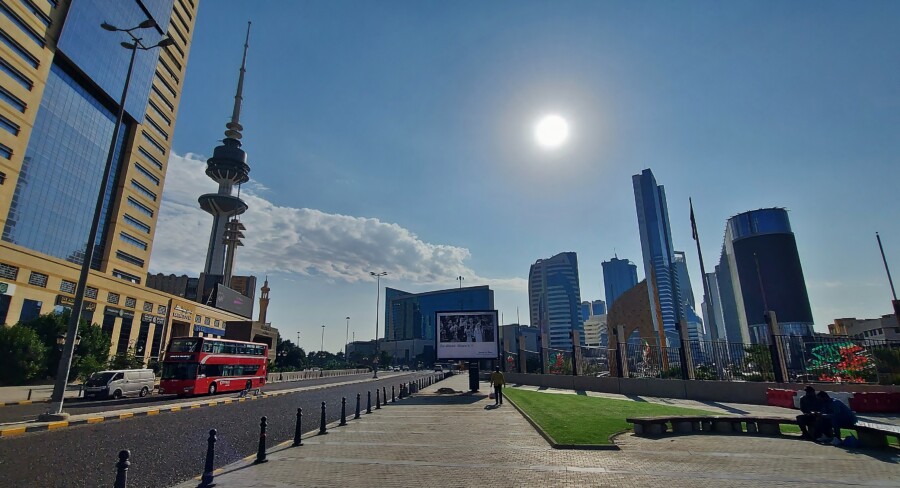
Kuwait City centre.
Being in Kuwait City I returned to the Mubarakiya Market many times. I think that place is a must visit because of the people. I spent a merry time with the Arabs in a teahouse, I chatted with vendors from many countries of the Muslim world, and I also tried to make contact with beauties dressed in stylish black sheets. Mubarakiya is a great place to chat, buy souvenirs and eat well. From the bazaar it is easy to reach the coast and downtown Kuwait City where there is more to see. One of these places is the Liberation Tower with a height of 372m.
About 13 km from Kuwait City is Salmiya, which in my opinion is a very active and pleasant suburb of the capital. In Salmiya I spent most of my time at the Marina beach which is nice and well-prepared for people who are tired of the big city. The beach is long and wide and you can swim. There are also a few palm trees on the beach and an interesting wooden object in the form of a shipwreck. Kuwait City and the famous Kuwait Towers are visible from Marina Beach. Not far from the Marina beach there is the Aquarium, which I think is a must see when in Kuwait. There are many beautiful animals inside, from seahorses, through moray eels, to great sharks. Behind the aquarium there is a beaitiful coastline, an elegant area for walking and palm trees of course.
With own transport one could also take a few trips outside of Kuwait City. One of them is the Failaka island, where in addition to the beach and peace there is also a Greek fortress built in the times of Alexander the Great, and an archaeological site also left by the Greeks. Someone else might prefer to go to the desert to Al-Jahra (32 km), to see the over 100-year-old Red Fort. Near the border with Saudi Arabia, about 100 km from Kuwait City there are Wafrah farms, where Arabs try to grow vegetables and fruits in greenhouses in the desert. This can also be very interesting, although I know it from Bahrain.
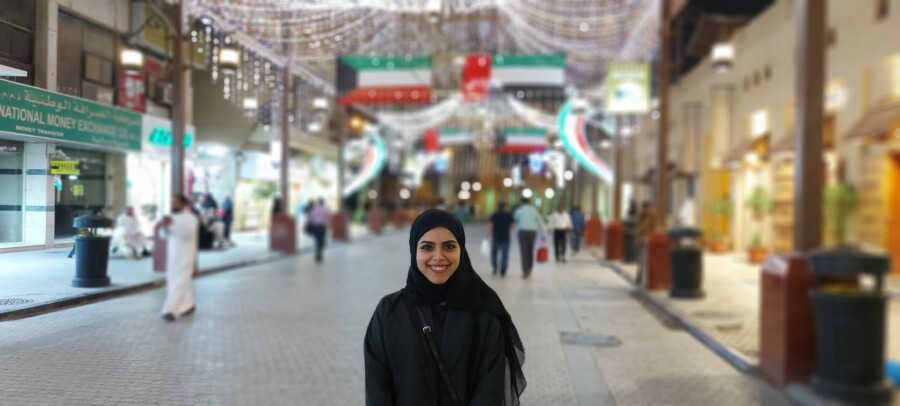
Kuwait; Arab girl in Mubarakiya market.
If someone really wants an original adventure, one could also go to the Bubiyan island and take the ‘road to nowhere’ towards Iraq. After a short stretch the road ends and there is only desert left. Bubiyan however is a delicate matter because this island is in a strategic location, close to Iraq and Iran. After the Gulf War in 1991 Bubiyan was turned into a US military base. However, Bubiyan has nice nature, including swamps and seasonally migrating birds. Tourism on Bubiyan Island is very limited but it’s starting to come back to life. There are large tents for rent and sometimes you can ride camels. I advise to rent a car.
Further part of the article in preparation.
Travel reports
Map
Location
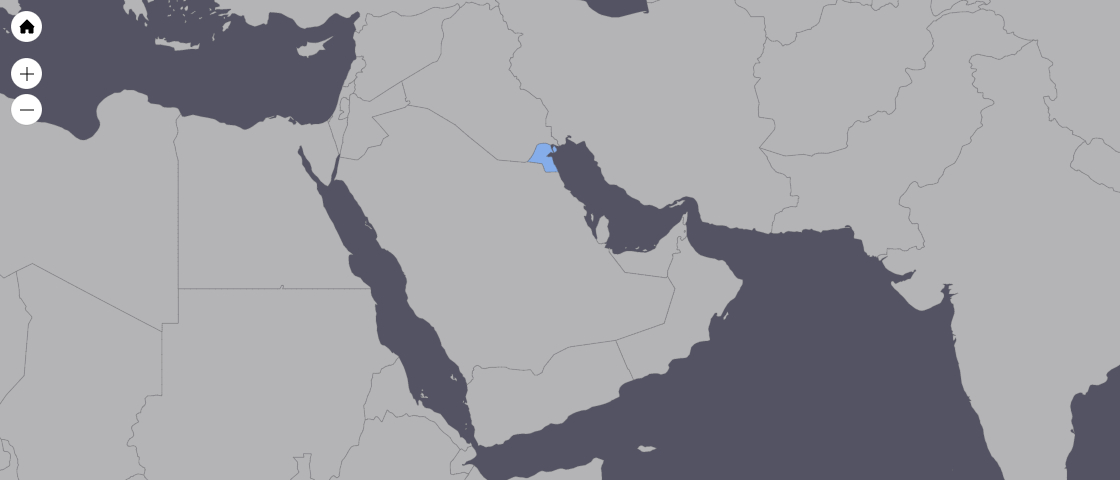
Practical information
Tourist Visa: I got a free Kuwait visa at the land border with Saudi Arabia. The formalities could have been shorter but in the end I got a visa. The proof of granting a Kuwaiti visa is the so-called ‘blue paper’ with all the information about the foreigner. It is necessary to keep it because hotels like to look at it. It is needed for check in. Unfortunately it was taken from me on departure.
The visa can also be obtained at the airport and is valid for 90 days. The list of countries in this category is provided on the Kuwait Embassy website: https://www.kuwaitembassy.us/page/evisa-application. You can also apply for the same visa before arriving in Kuwait, but I don’t see the point if it’s only a tourist stay.
Safety: Kuwait is safe for tourists. People were always peaceful, helpful and honest. I have a good opinion of them. However, no country is completely safe, what has nothing to do with people. In my opinion, in the summer the hot climate of Kuwait is very dangerous because at 50°C the heat becomes toxic and there is no air. I travelled all over Kuwait and it was always safe.
Some sources warn to stay away from the border with Iraq and Saudi Arabia but in my opinion this is nonsense. I personally crossed the land border between Saudi and Kuwait and then hitchhiked to Kuwait City. In the desert, in cities, day or night it was safe. I didn’t cross the border with Iraq.
Reliable sources say that until recently there were about 2 million anti-personnel mines in the Kuwaiti desert. The Kuwaiti government has removed about 1.6 million mines and is still looking for another 400,000 mines. Beaches in Kuwait City, Salmiya and Failaka Island are safe. Kuwaiti authorities suspect that mines may be particularly present in the Sabah Al-Ahmad Nature Reserve.
Getting around the country: There is a network of buses in Kuwait. There is a bus connecting Kuwaity City to Salmiya, buses inside Kuwait City, and also a bus from Fahaheel to Kuwait City. From my experience however I know that the best, fastest and most reliable are taxis. They are also cheap because Kuwait is a country drowning in oil. It is true that a bus ride inside Kuwait City costs only 250 fills, but for tourists who don’t know the connections it is a problem.
I recommend taxis, especially that Kuwait is expensive and therefore the waste of time costs more than a taxi. However, if someone is in Kuwait longer I advise to get to know several bus routes. I used them several times and I never got lost.
For taxis from Salmiya to Kuwait City (about 10km) I paid 4-5 dinars. On average, for transport within Kuwait City it is 2 dinars. From the border with Saudi to Salmiya I hitchhiked and a few times someone gave me a lift, so hitchhiking sometimes works too. Kuwaitis realize that being lost in the desert and being unfamiliar with the terrain is an unpleasant situation. For a taxi from Salmiya to the airport I paid 7 KD, although the prices end at 10 KD.
In all the countries of the Arabian Peninsula I always recommend renting a car. Then you can visit more distant places, such as Wafrah Farms near Saudi (107 km), and the Sabah Al-Ahmad Nature Reserve (61.5 km). A litre of petrol in Kuwait, depending on the type is around 100 fils or about 26 pence.
Prices: (for 2022 when 1KWD = £2.64). In other words welcome to Kuwait; in the country with the most powerful currency in the world which is more than 2.5 times more expensive than the British pound. It’s a shock! The purchasing power of the Kuwaiti dinar is therefore enormous wherever Kuwaiti Arabs go. The Kuwaiti dinar is so strong because of its vast oil and gas reserves. The largest banknote is 20 KWD, while in England it is GBP 50, and in Poland as much as 500 PLN ! There are also 1/4 and 1/2 dinar notes; and what’s unique 1 dinar is divided into 1000 fils and not 100. Kuwait is so rich that there isn’t even an income tax and there is no VAT.
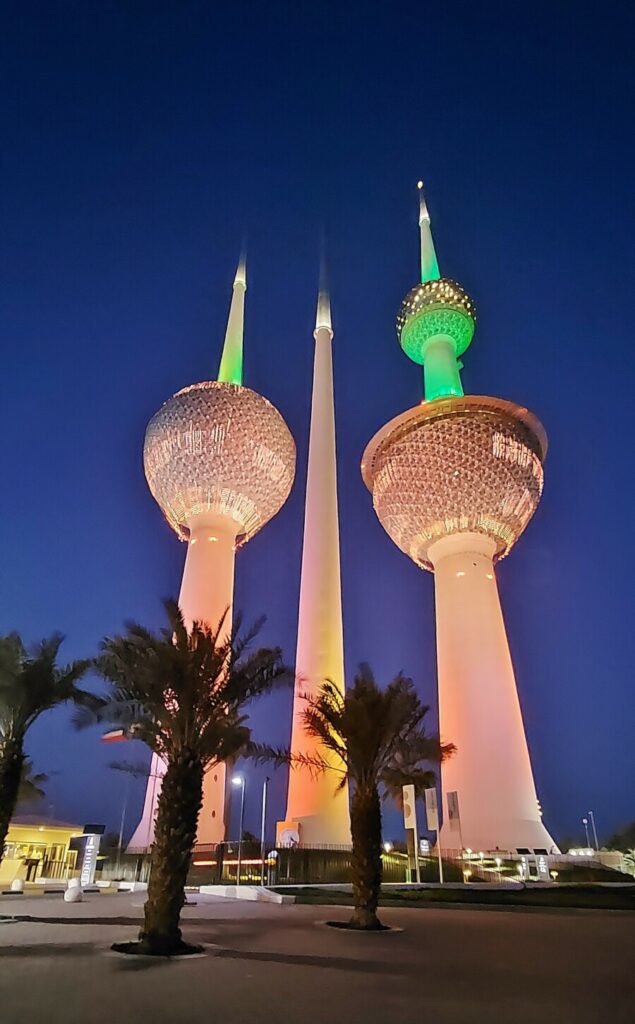
Kuwait Towers; the symbol of the State of Kuwait.
But let’s move on to the prices. There is no doubt that hotels are the most expensive. I paid 20 dinars for the cheapest possible hotel, even though the starting price was 25 dinars. The conditions were great, breakfast included, close to the centre and by the sea. But I couldn’t do that for a long time, that’s why soon I luckily found a bed at someone’s private house for 11 KWD (£29). It’s not expensive for Kuwait but if I had to pay 50-60 pounds for one night in every country I’ve been to, my travels would end quickly. Fortunately Kuwait is small and many places of interest are close to each other.
I will add that in Salmiya by the sea there is a hotel for 92 dinars per night (243 pounds).
I discussed transport prices in the section above: moving around the country. I think that for Kuwait taxis and even more, the buses are priced affordably. Hotel prices in Kuwait are unprepared to accommodate budget travellers. For example in Dubai there are hotels where a night costs $25,000 a night but there are also dormitories in the suburbs where a night costs 10 pounds.
Food is the cheapest in Kuwait. You can eat something tasty for 1-2 dinars. Coffee and tea in the bar costs 0,5 dinar. On the other hand if someone wants to drink coffee in the best bar of Salmiya port, the price is 3.5 KWD. It seems that London is ‘cheap’. In a nice Persian restaurant I paid only 3,5 dinars for a good meal, although there are places where you can pay only 1.5 KWD for grilled meat or kebab. Shopping at the bazaar is not expensive.
I paid 10 dinars for a return ferry from Salmiya to Failaka island. The entrance to the famous Kuwait Towers observation point costs 3 KWD but it’s a symbol of Kuwait so it’s worth it. The ticket to Salmiya Aquarium cost me 2 KWD. I paid 1,25 dinars at a hairdresser from Bangladesh. All in all the prices of the hotels are the most painful and the rest is affordable considering it’s Kuwait.
Climate: Kuwait is one of the hottest countries in the world. It’s a dry hot desert climate. In July the temperature in Kuwait City easily reaches 45°C. Kuwait also recorded one of the highest temperatures in the world: 53.2°C. Even in October the temperature in Kuwait City ranges from 31°C to 38°C on average. When traveling in Kuwait you should wear a hat and glasses, drink water as a preventive measure and use sun creams. A European cannot imagine what the heat is like in Kuwait, Saudi, India, Pakistan and many other countries.
“At 50°C – halfway to the boiling point of water and more than 10°C above healthy body temperature – the heat becomes toxic. Human cells begin to boil, blood thickens, muscles tighten around the lungs, and the brain becomes clogged with oxygen. “
The Guardian
Construction workers from the Indian Subcontinent don’t work in Kuwait between 12 and 4 because it is too dangerous. The same should be considered when traveling. In Kuwait it’s sometimes so hot that birds fall dead into the desert and small fish by the shore appear on the surface upside down. If someone wants to visit Kuwait I recommend the period from October to February, although November is better. Annual rainfall is on average only 112mm, although only 34mm of rain falls annually around the airport. Almost the whole of Kuwait is covered with hot desert, except for the Al-Jahra oasis. It is also very hot there but at least wetter. Kuwait does not have a single river, although there are several valleys that temporarily fill with water after scanty rainfall in the winter season.



